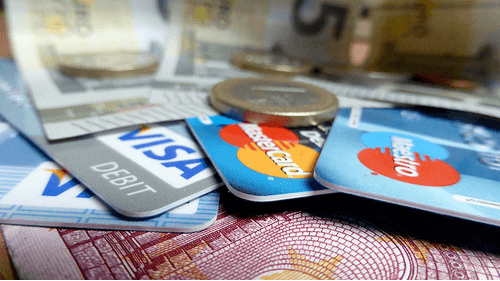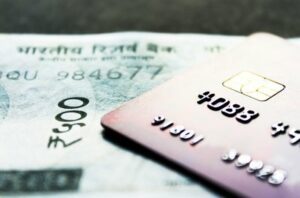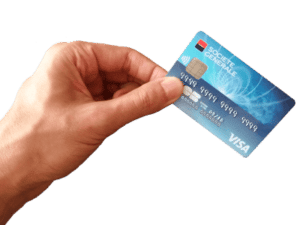A floor limit is a set amount for credit card authorizations; a merchant service provider requires a business to have a set point at which credit cards require approval to go through. Purchases below this amount don’t require authorization, while sales above the floor limit need the authorization to process. Not getting authorization for a charge above the floor limit may result in a chargeback. You can reverse a chargeback when there’s evidence presented of the purchase, but if no evidence exists due to poor recordkeeping, the merchant loses the money on the transaction.
Defining a Floor Limit
Image via Flickr by Sean MacEntee
A floor limit is a set amount of money established to allow nonauthorized purchases. Here’s an example: The provider of a high-risk merchant account sets the floor limit at $30 for all purchases. In this case, the provider will allow transactions under $30 without authorization. Sales greater than $30 will need authorization — no exceptions. If the merchant service provider sets the floor limit at $30, an authorization code has to be present to avoid a chargeback. Not every cardholder goes for a chargeback when the sale isn’t authorized, but the risk of losing money is much greater when no authorization code is issued for a sale. Read More: High risk merchant account shopify
Sometimes, an account has a zero floor limit. In this case, every card issued must include an authorization code issued with the sale. A zero floor limit usually gets placed on accounts that never process credit cards in person. When a business accepts credit cards primarily through online or over-the-phone transactions, the business always needs an authorization code for the transactions.
A floor limit comes with some benefits for businesses. Since sales below the floor limit don’t need authorization, the business can require a signature for those sales. Yu don’t need a receipt for purchases under the floor limit, which can free up businesses and customers from more steps, saving them time and effort. The business won’t suffer if a customer initiates a chargeback because the amount is below the floor limit.
Some exceptions to the floor limit exist in the form of debit cards. Debit cards always need authorization codes to come from the cardholder’s bank. This code is to protect the cardholder from an accidental overdraw. Some businesses put a temporary hold on card funds more than a sale. A temporary hold gets used where the final sale amount is unknown, such as a gasoline sale. The business needs to make sure enough money exists in the account to complete the purchase. The hold also minimizes the loss in case of a stolen debit card.
What Are Authorization Codes?
Multiple authorization codes (PDF) can get issued when the sale exceeds the floor limit. Some come from the terminal itself, while others come from the card guarantee company, such as Visa or Mastercard. You should understand what each code means, and how the code affects that particular transaction. Some transactions come with the ability to dispute the charges, while others are labeled fraudulent and have no option for dispute.
You should know when you can dispute the chargeback and when you need to accept the loss of money. Arguing a chargeback takes time and effort, but a dispute makes a difference between keeping the money while the customer keeps the merchandise.
Why Does a No Authorization Code Get Issued?
The primary reason a no authorization code gets issued stems from a sale exceeding the floor limit. But other codes can cause a lack of authorization. Each code has its rules and specifies if the chargeback — if one happens — is open for dispute or not.
When a merchant has a sale of $30 and the merchant’s floor limit is set to $25, a no authorization code gets issued. This issuing code may come from the terminal or the merchant service provider. Sometimes, an authorization for an over-the-limit transaction is issued, allowing the business to process the sale and avoid a chargeback.
All transactions for amounts that exceed the floor limit receive an authorization code and aren’t as easily disputed by the customer.
How Does a Floor Limit Get Determined?
A few factors play a role in determining a floor limit. These factors include using Visa or MasterCard guidelines, average sales, and what the merchant service provider feels comfortable allowing. All merchant accounts, including a high-risk merchant account bad credit, put a floor limit on sales, especially when the client is new to accepting credit cards. This floor limit corrals liability to the business and service provider.
“Card not present” sales are almost always set at a limit of zero, as these sales are harder to guarantee against fraud. Establish exceptions to the rule with the merchant service provider.
What Happens When a No Authorization Is Returned?
If the terminal receives no authorization, it does not block the sale. Both sides of the sale get their merchandise and money in the short term. If the customer is happy with the purchase, the consumer is unlikely to start a chargeback, and the business may never hear from the customer except in cases of repeat purchases. The card-issuing bank still funds the sale, and the business receives the money.
If the customers decide they’re not happy and demand a refund in the form of a chargeback, the business has to prove the sale took place. In other words, the business needs to give proof of the sale, show evidence that the cardholder was part of the transaction, and prove that an authorization code was issued. Alternatively, proof of refund is also acceptable. If no authorization code got issued, the merchant has to pay for the chargeback.
Low floor limits can seem unfair, but these limits are designed to protect everyone who may be involved in the credit card sale. For merchants, good business practices involve losing as little money as possible through chargebacks and other credit card disputes.






